Get all the best tips and tricks in this beginner’s guide to learning to bake with yeast! Is instant yeast (also known as rapid rise yeast) or active dry yeast better for your recipe? Find everything you need to know right here.
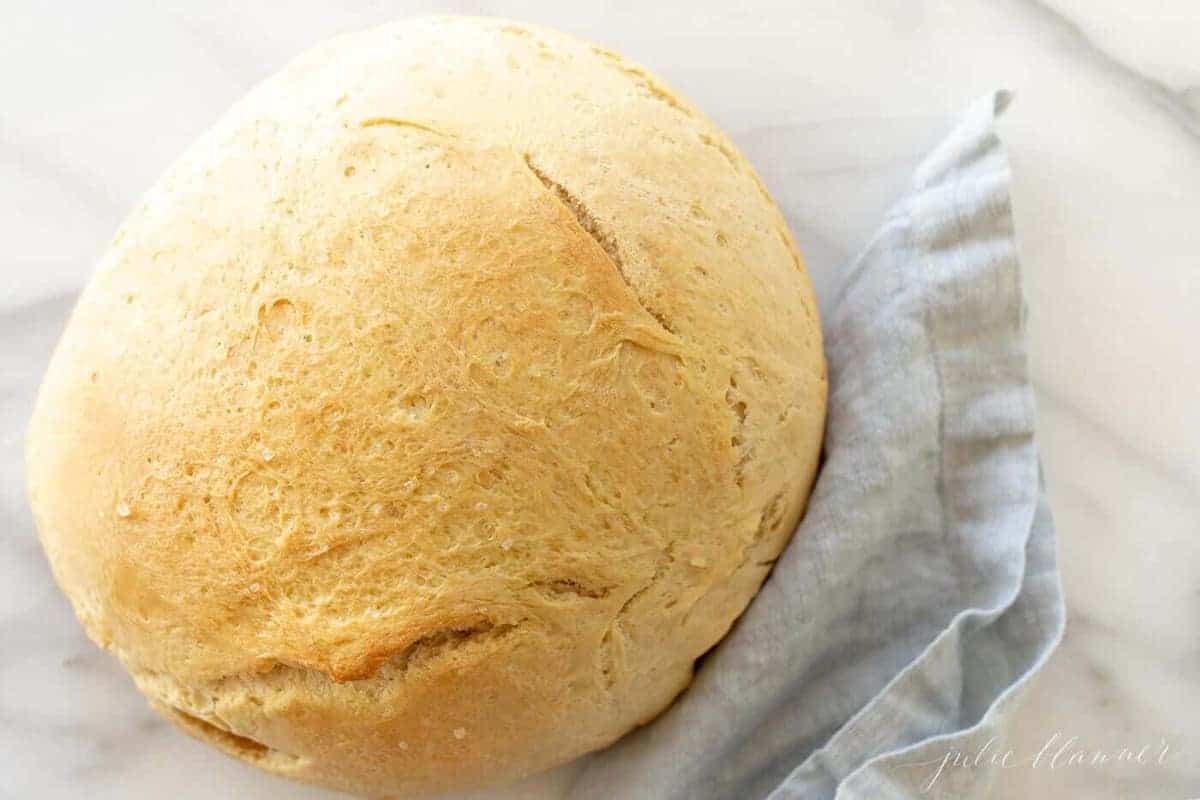
The recent weeks have shown us a fascinating look at the inner workings of supply and demand in our grocery stores. While shoppers have rushed to fill their carts with everything they might need, it seems that baking supplies are often in short supply.
Even if we CAN find items, it seems that many of us are unsure what to do next!
Take yeast, for example. Recently I’ve received so many questions about how baking with yeast and how it works! I thought it would be a great opportunity to delve a little deeper into the details of this surprisingly tricky technique for baking.

Baking with Yeast
I’ve heard from so many readers that have said yeast has been difficult to find on their shelves!
Luckily, it’s still available online in a variety of forms, although you’ll sometimes pay a premium.
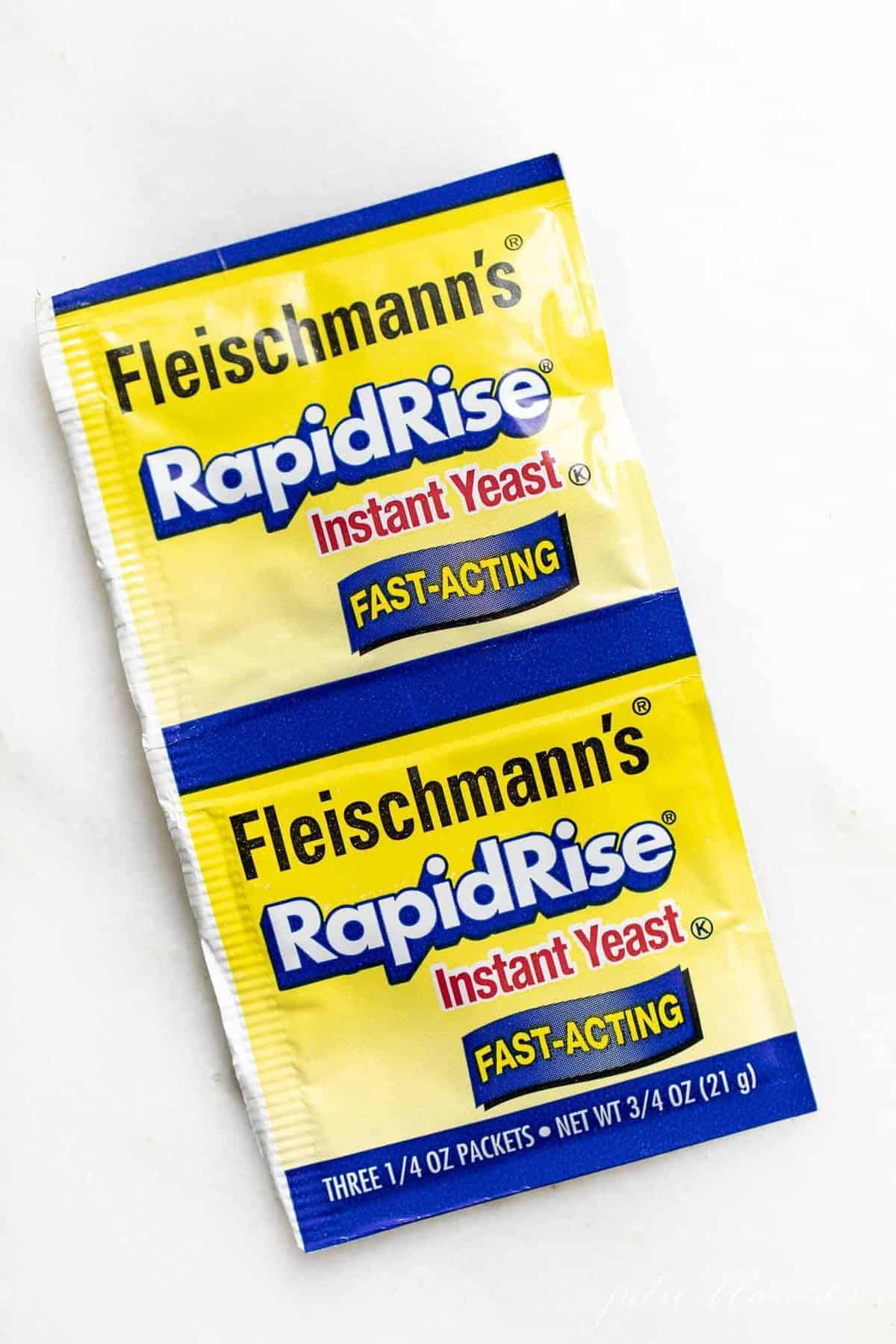
With those shopping difficulties in mind, I recently brought you a full printable list of baking substitutions, as well as a round up of pantry-based recipes that can get dinner on the table with very few ingredients.
I’ve shared recipes that require yeast in the past, like these incredible homemade cinnamon rolls, quick dinner rolls, and homemade bread. No bread machine required!
I love bringing you delicious ideas to inspire you in this often difficult situation.
Let’s learn a little about yeast today, shall we?
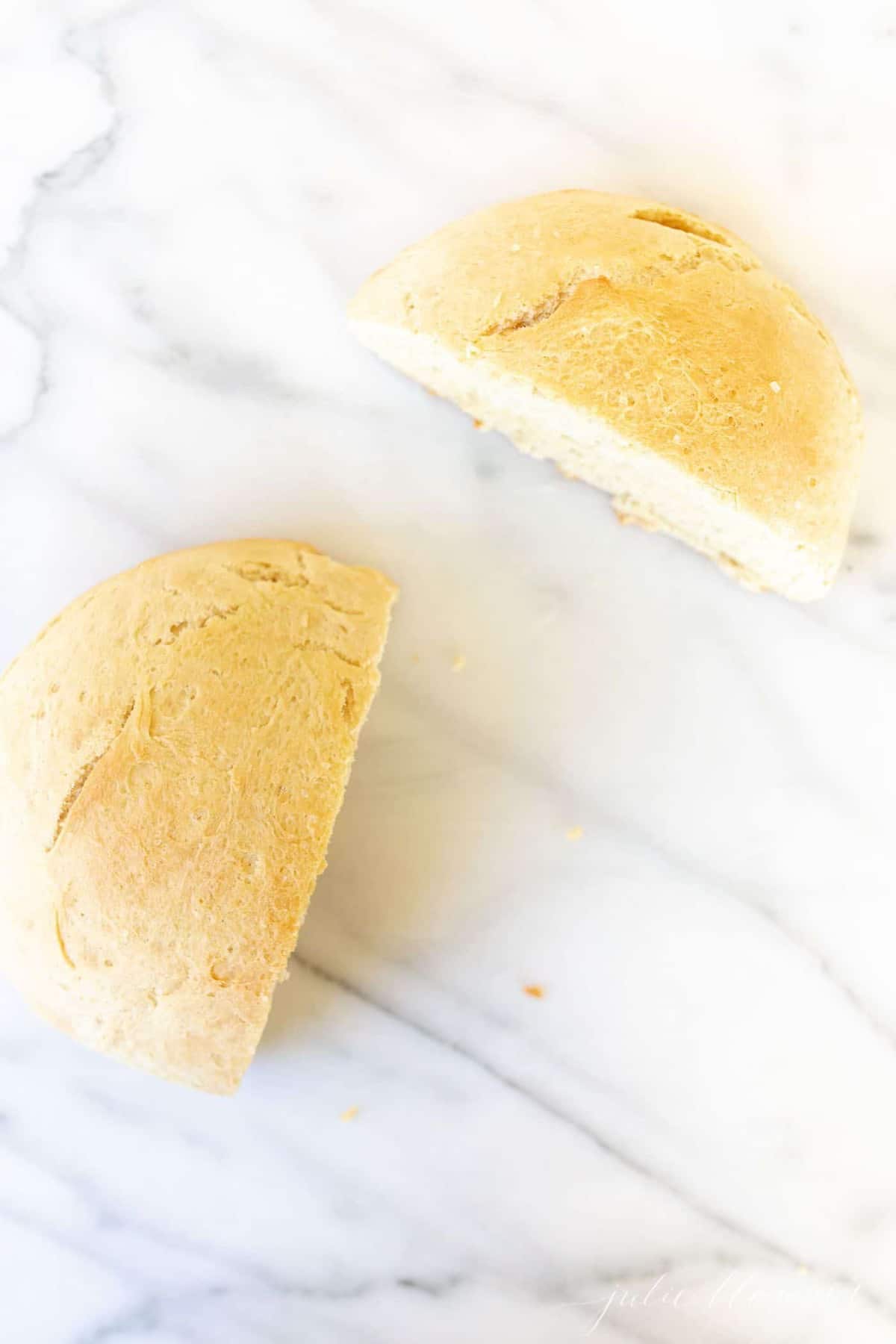
Learning to Bake with Dry Yeast
There are many types of yeast on the market available to bakers, and while you can use a cream or compressed yeast, those are more commonly allocated to experienced bakers.
Admittedly, it’s a confusing world to navigate, but one that I think can be simplified with a little basic knowledge. Once you eliminate the fear, yeast is actually quite simple to use and can make such an incredible impact on your baking.
For today’s purposes, we will concentrate on the two types of dry yeast that are most commonly available and easily interchangeable: active dry yeast and instant yeast.
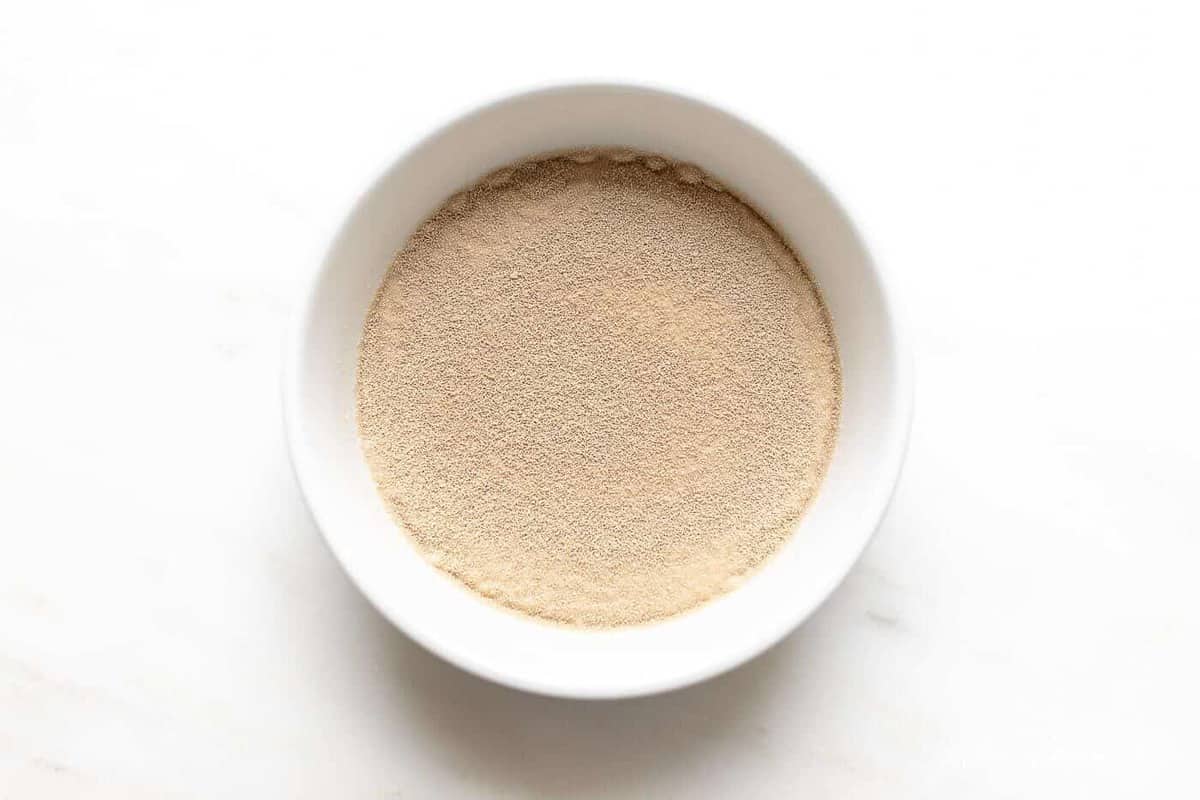
What is Yeast? How Does Yeast work?
Yeast is a living organism. Yeast requires “food” and moisture to do its job. What’s the job, you ask? Yeast provides flavor and carbon dioxide in dough: it’s literally what makes your bread rise to perfection.
It’s produced into tiny granules (that resemble poppy seeds) and packaged in small paper packets or larger glass jars. (Hence why many recipes will require a “packet” of yeast.)
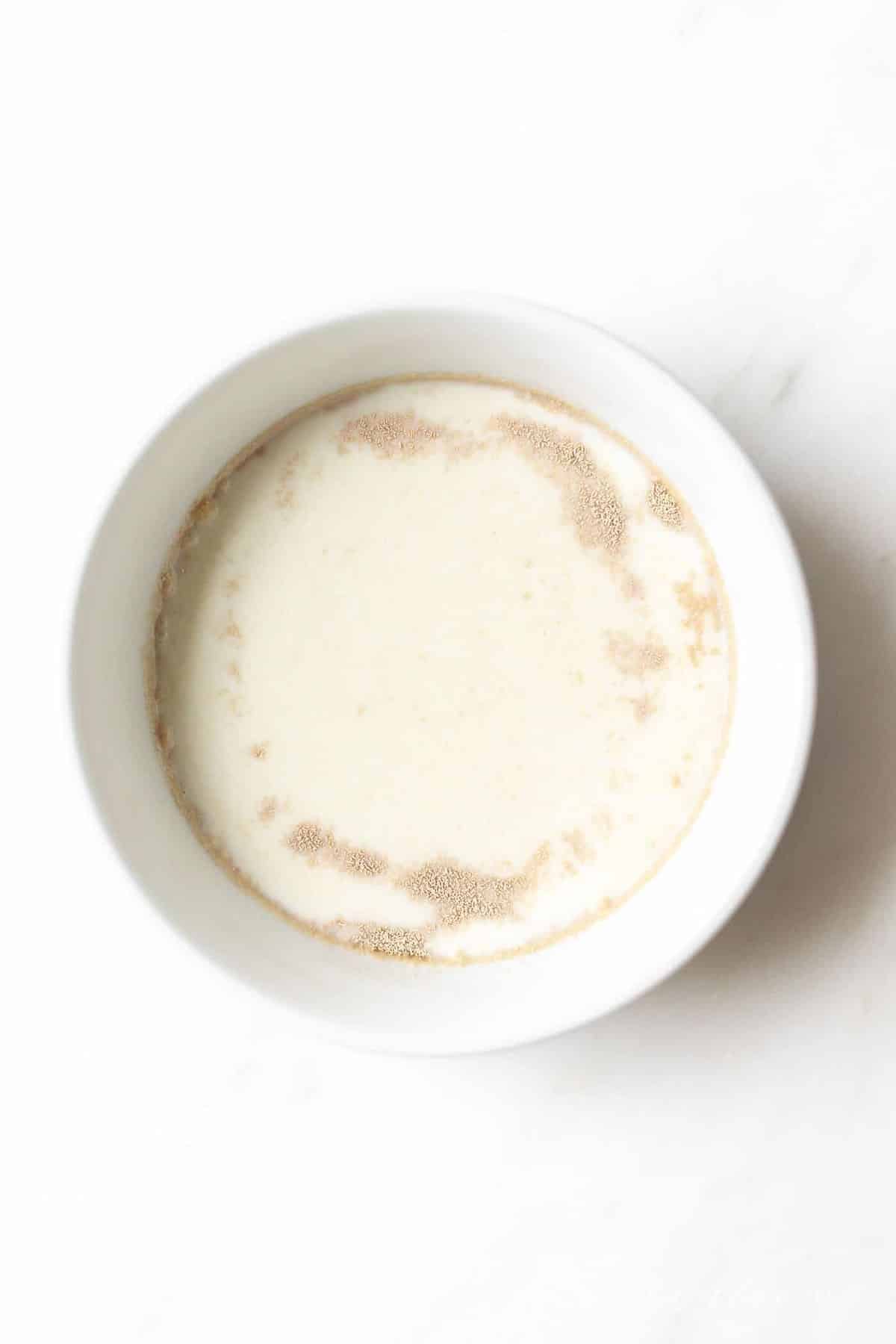
Yeast prefers a fairly warm temperature (although not too hot), which is why warm water or other liquid is added to dough.
When combined with warm liquid and sugar (the food that activates it), yeast makes dough in your bread recipes rise.
When adding liquid to your yeast, remember the following tip: If it’s too hot to touch, it’s too hot for the yeast.
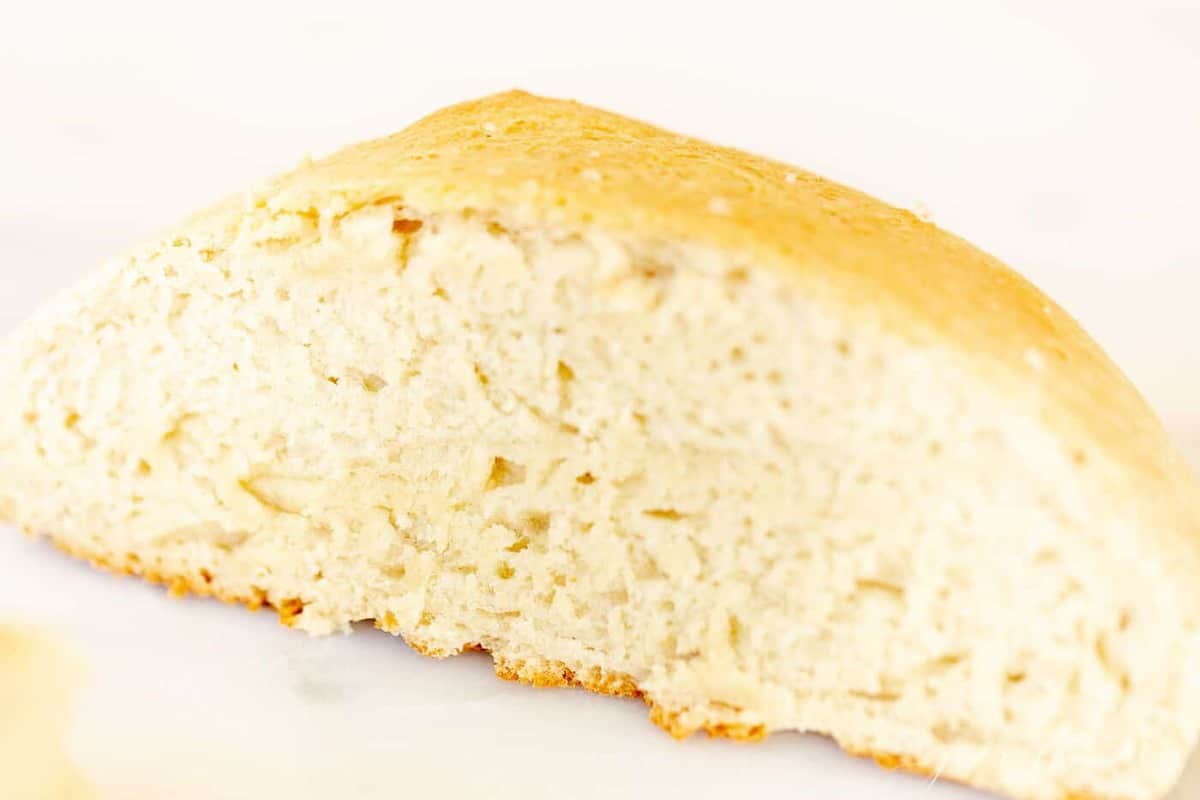
What’s the Difference Between Active Dry Yeast and Instant Yeast?
Active dry yeast needs to be hydrated in water before using, while instant yeast can be mixed right into dry ingredients.
Instant yeast (rapid rise yeast) tends to move things along a little quicker – which can be good or bad for experienced bakers! Many experienced bread bakers believe that a slower rise creates more flavor overall.
However, because instant or rapid rise yeast are fast acting and require a little less hands-on time, they tend to be what I choose at the grocery store!
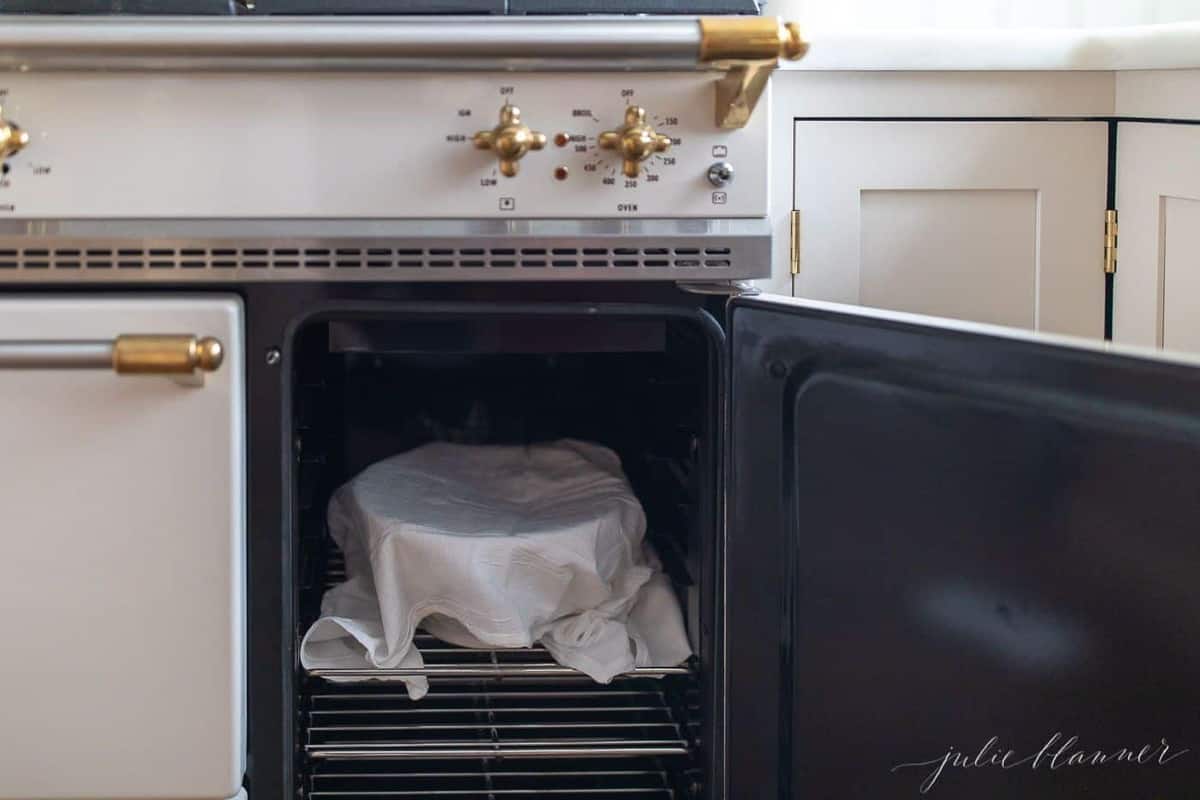
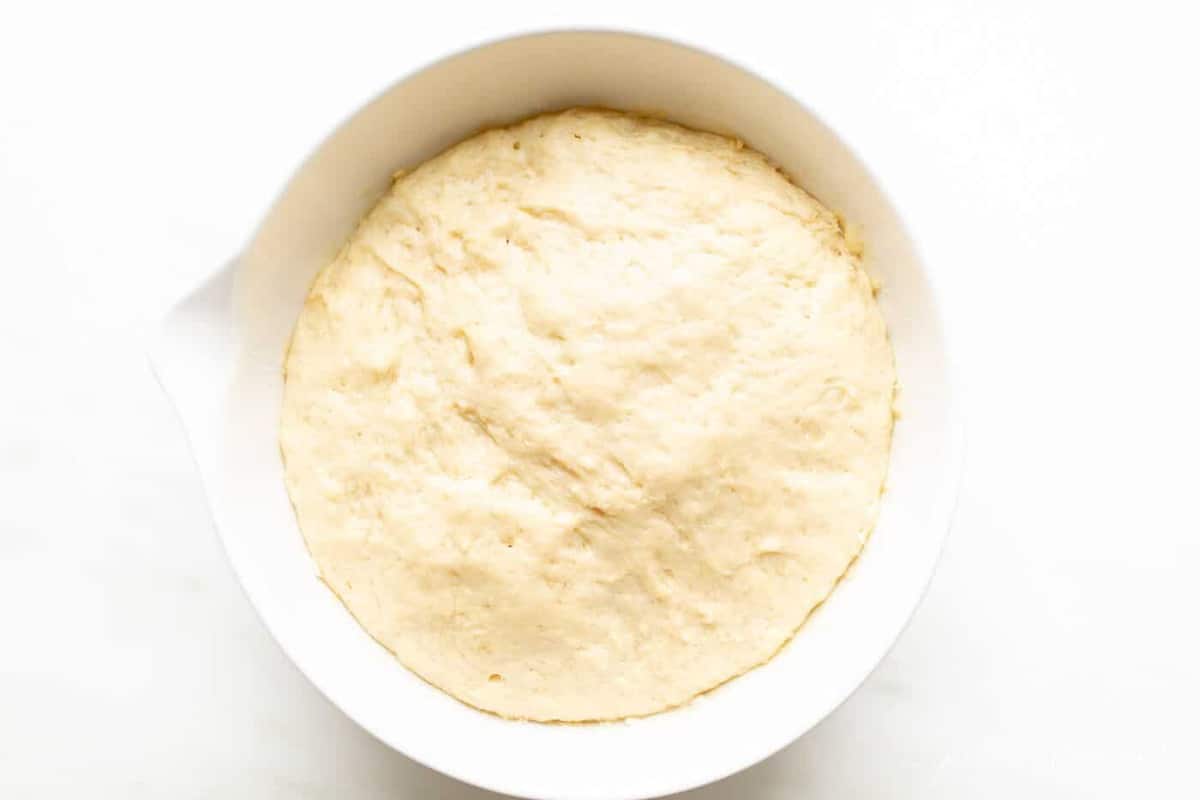
Active Dry Yeast
Active dry yeast was the most common packaged yeast on the market until the 70s when instant yeast was introduced. It generally needs to be mixed with warm liquid prior to using in dough.
A common myth was that this yeast needed to be “proofed” or mixed into warm water and sugar to be certain that it was indeed active.
Today’s packaged active dry yeast does not require proofing, however.
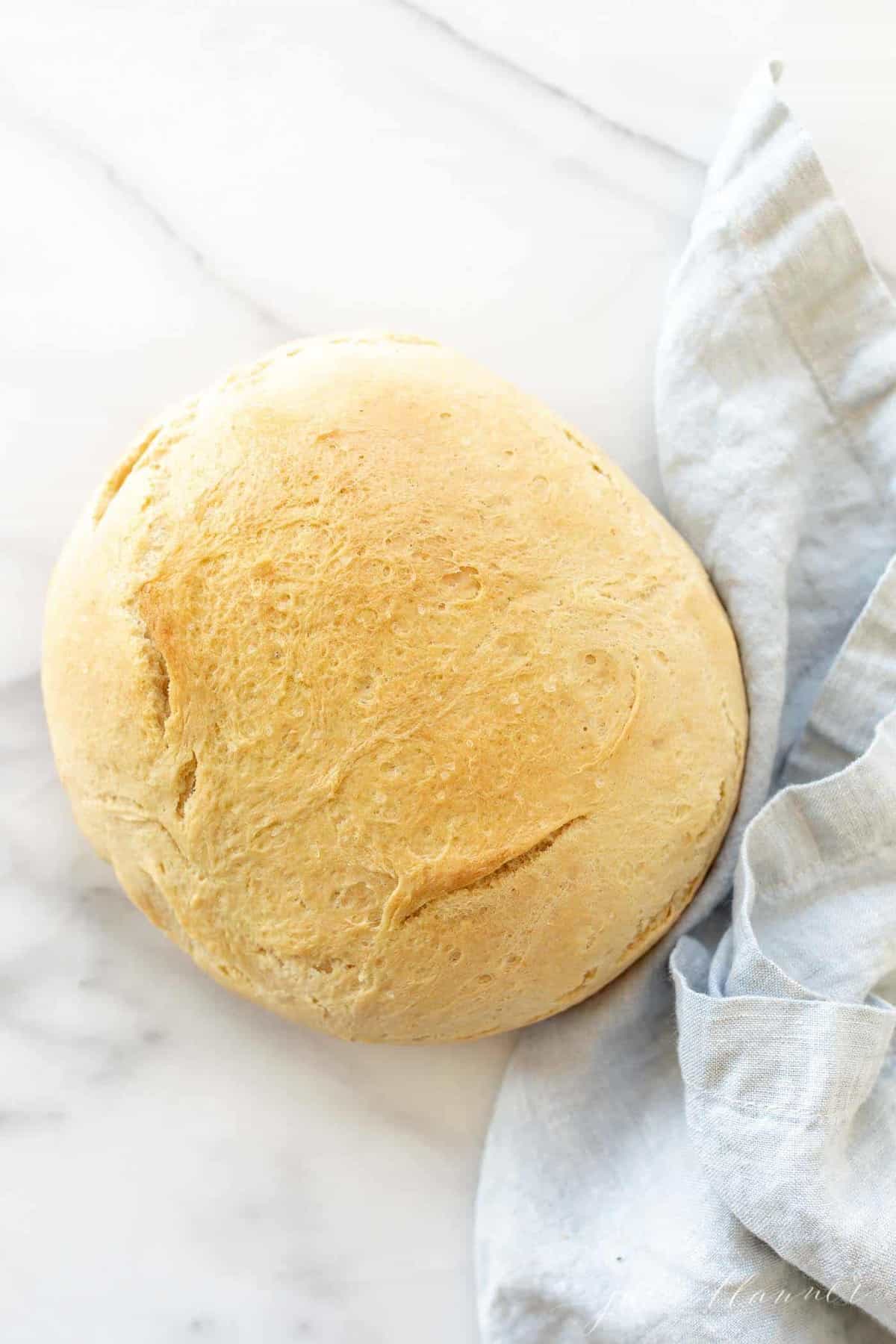
Is Instant Yeast the Same as Rapid Rise Yeast or Quick Rise Yeast?
Short answer? Yes! Instant yeast may also be marketed and sold as rapid or quick rise yeast.
Long answer? Not exactly. Different brands have formulated their own versions of this fast acting yeast, with slight variations that make them each a little different. However, they can all be used interchangeably with no recipe changes.
It’s often a brand-specific naming situation that can cause some confusion in this department.
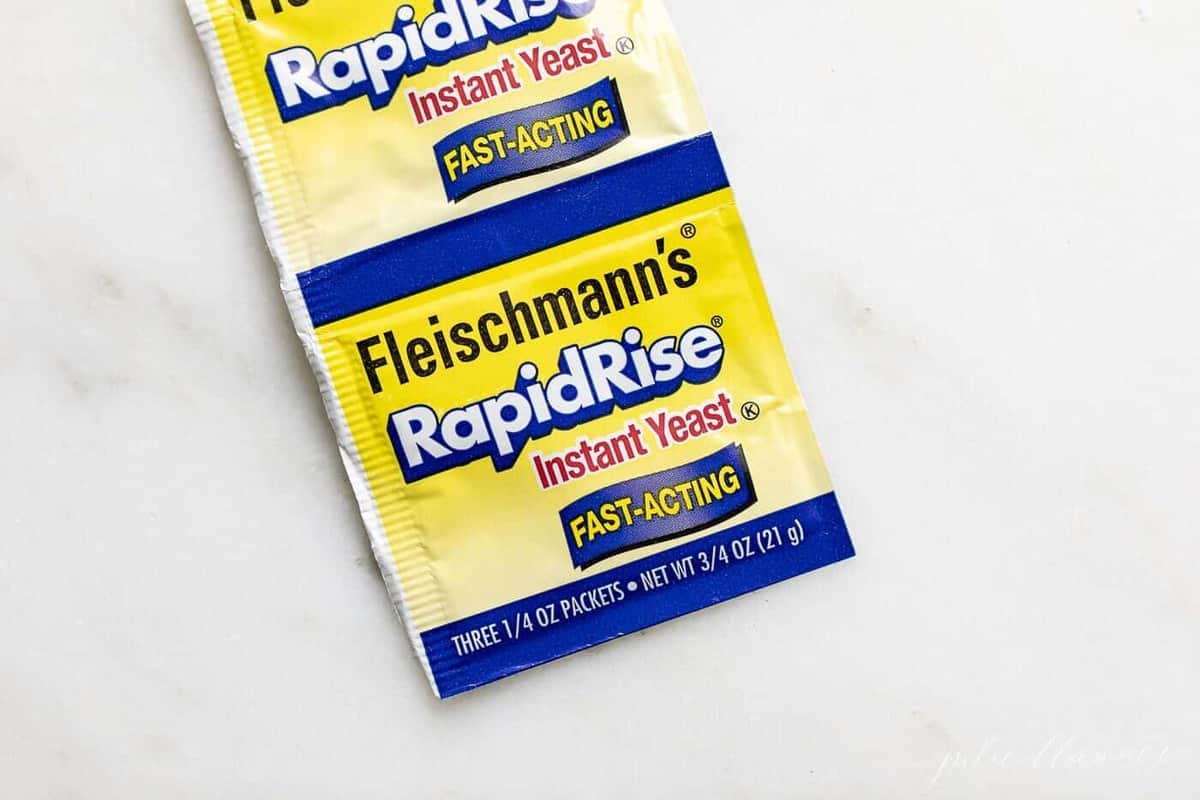
Instant yeast has a slightly faster rise time. Because the dough rises a little quicker and requires no activation, it’s often an easier choice for beginning bread bakers!
Which Type of Yeast Should I Use?
Whenever possible, try to use the yeast that your recipe calls for. Following specific directions step by step in a recipe will always yield the best, foolproof results.
If you’re new to using yeast in your bread baking, I would choose an instant yeast simply because you’re eliminating the one extra step required with active dry yeast.
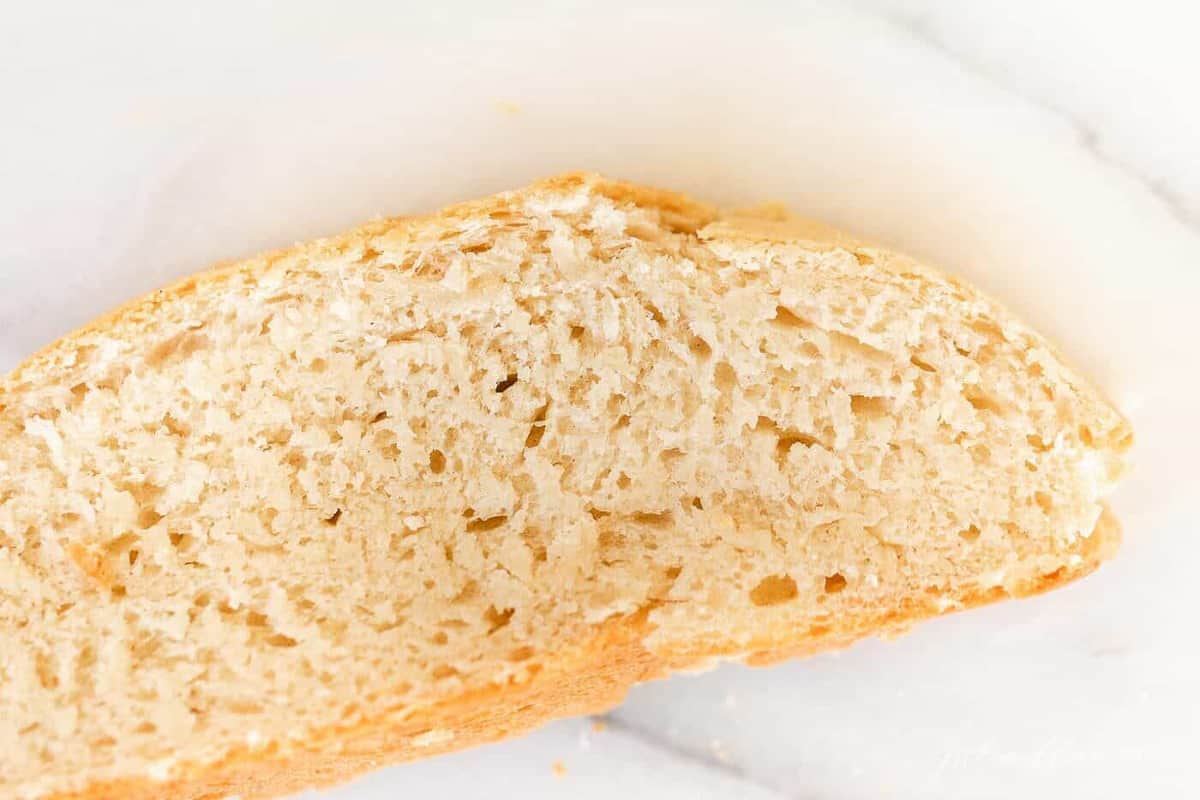
How Do You Substitute Instant Yeast for Active Dry Yeast?
Because instant yeast rises just a touch quicker, you’ll need to use slightly less yeast when converting between recipes calling for active dry yeast to recipes calling for instant yeast.
The conversion numbers vary according to experts, but it seems that most suggest if the recipe calls for 1 teaspoon of instant yeast, use 1 1/4 teaspoons of active dry.
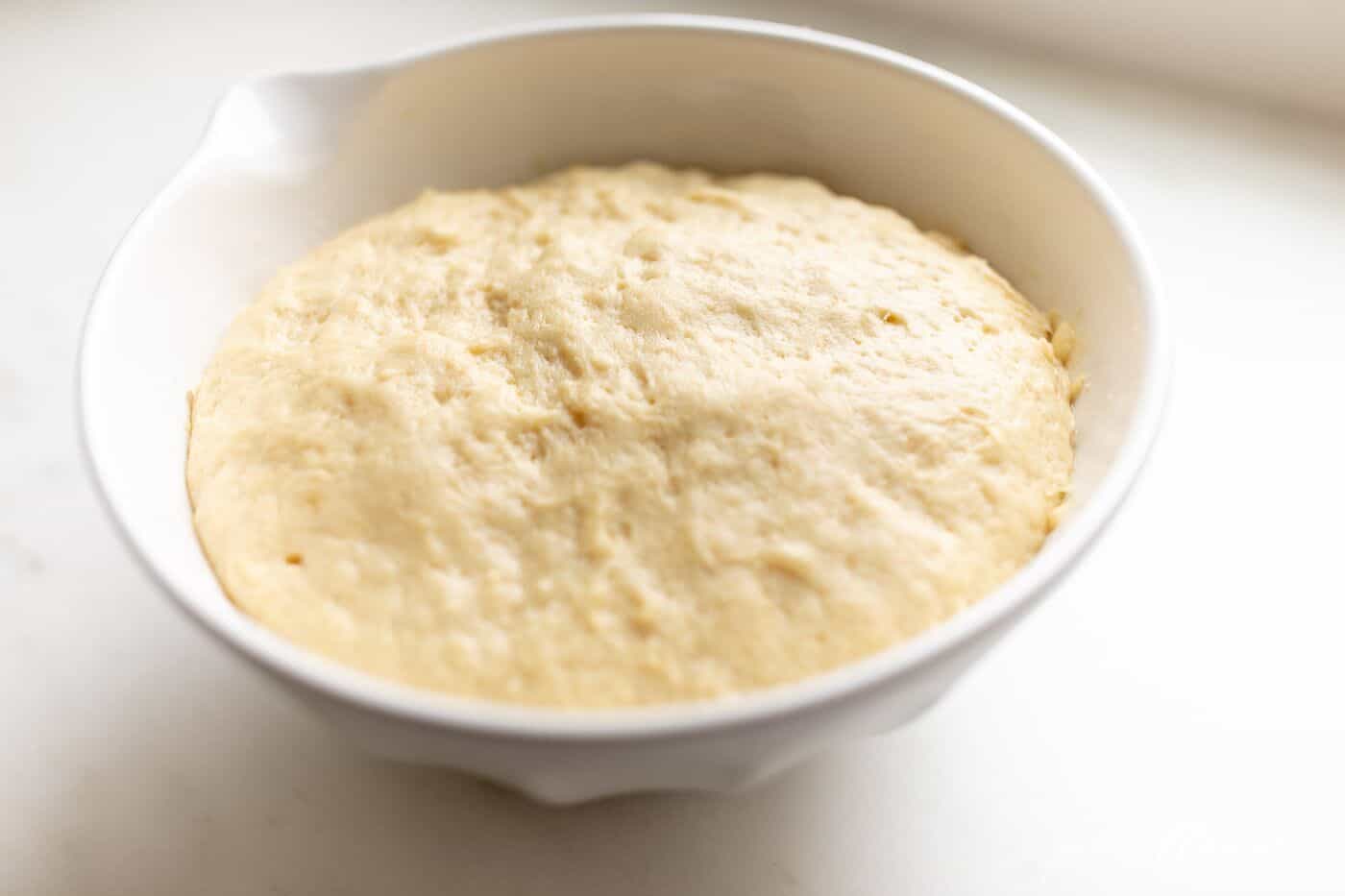
On the flip side of the coin, if a recipe requests 1 teaspoon of active dry, try to use just a touch less instant.
Keep in mind, your recipe will likely be just fine if you substitute in exact amounts. Baking is an exact science though, and this is something to consider.
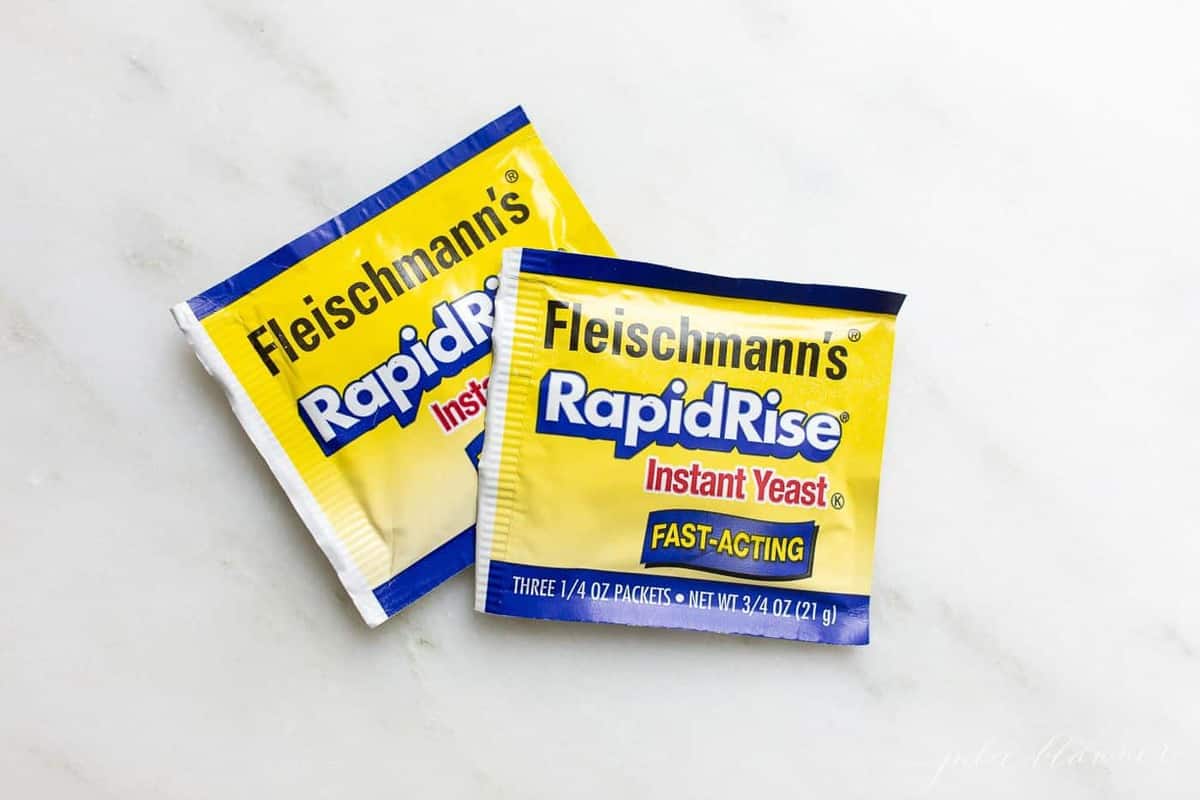
What’s the best way to store yeast?
Dry yeast is sold in a dormant state and should always be stored at room temperature. A dark cabinet or pantry is best!
More Helpful Baking Posts
- How to soften cream cheese
- Pearl Sugar
- Loaf Pan Sizes
- How to soften butter
- How to brown butter
- Printable Substitution list
- Creme Fraiche Substitute
- Printable Measurement Conversion chart
- Essential Baking Supply Guide


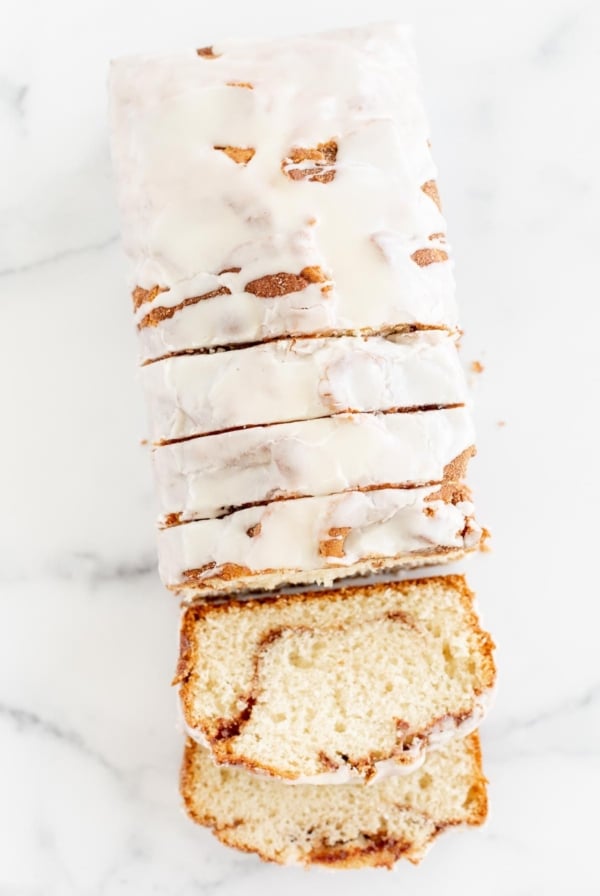






I have used instant yeast for years but the last container lam having trouble with. The bread rises nice but the bread falls in the cooking. Why.
How can I make pecan sticky rolls that are 4/5 inches tall when finished baking? Do I just cut the rolled dough so that they longer? And then let them rise for a longer period of time?
Do you let the yeast rise in the milk and sugar before you add to flour mixture? Thanks!
Hi Carol!
Yes, that’s correct. Enjoy!
Julie
Hi good night. I saw that this packet is 21g, do you use that amount in the recipes when this package is written? Or are these 21g divided into these two sachets in the photo and you use only one sachet? Thank you very much in advance.
One sachet. Enjoy!